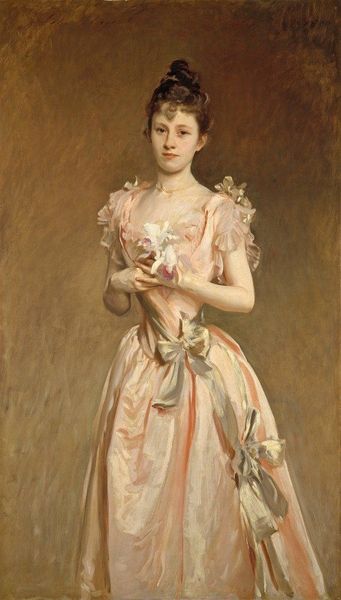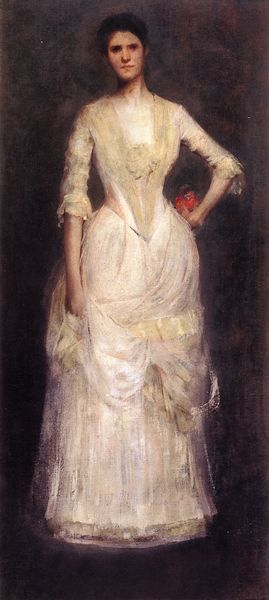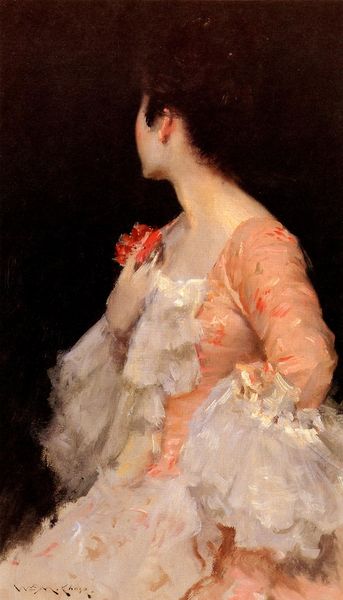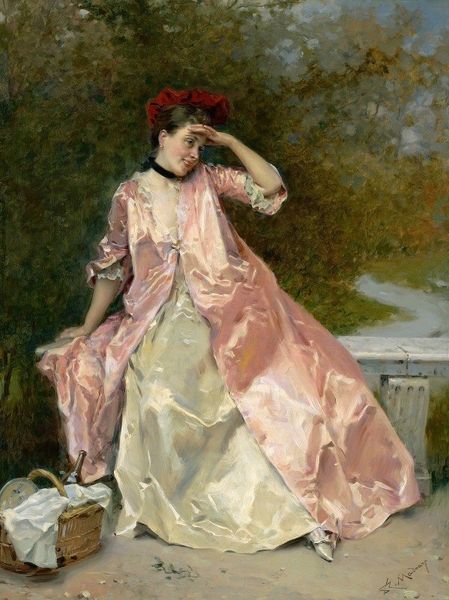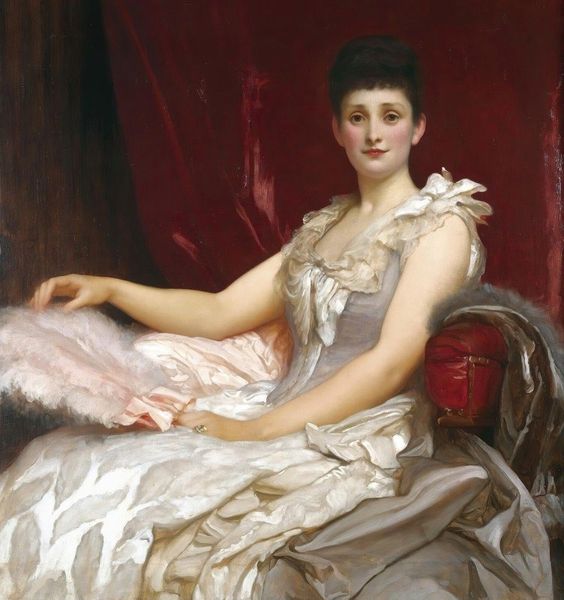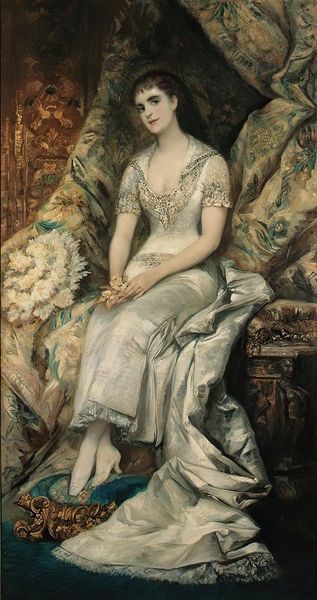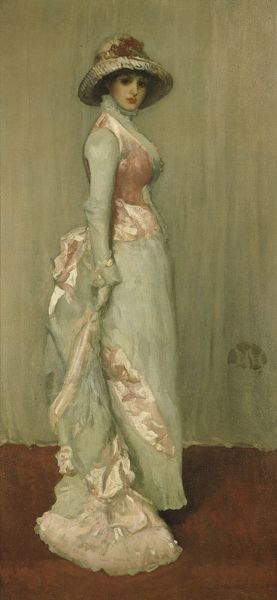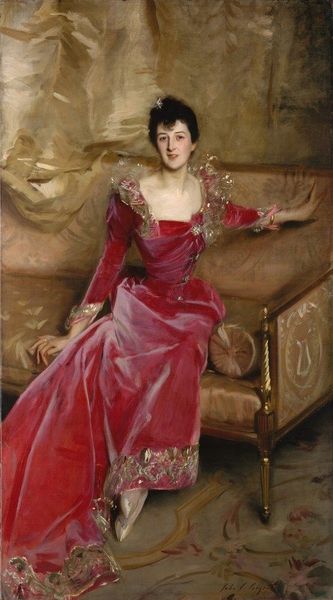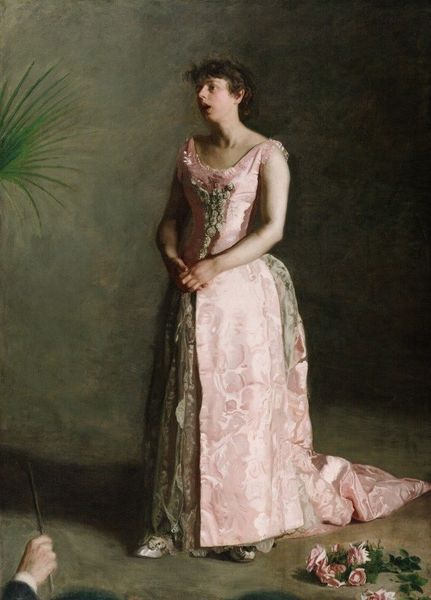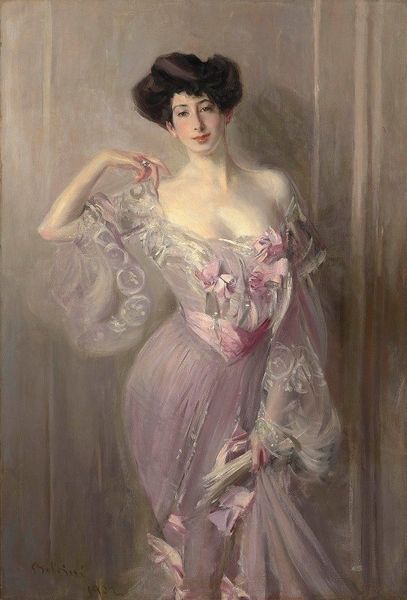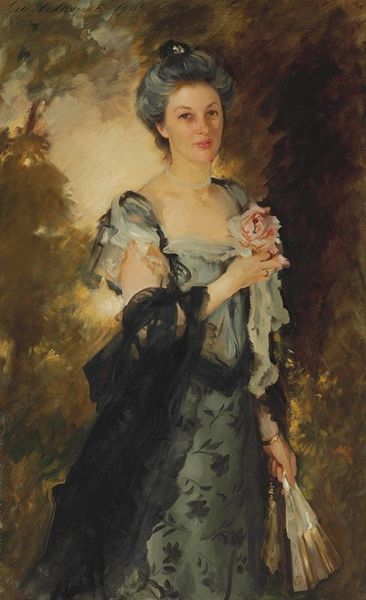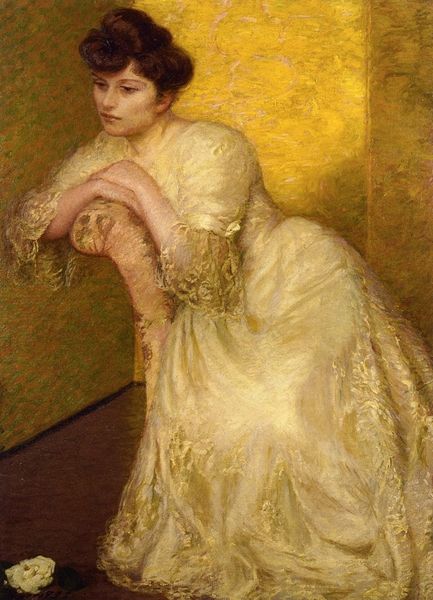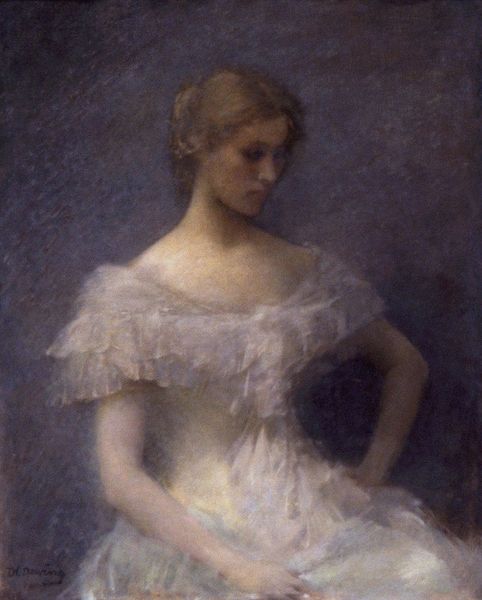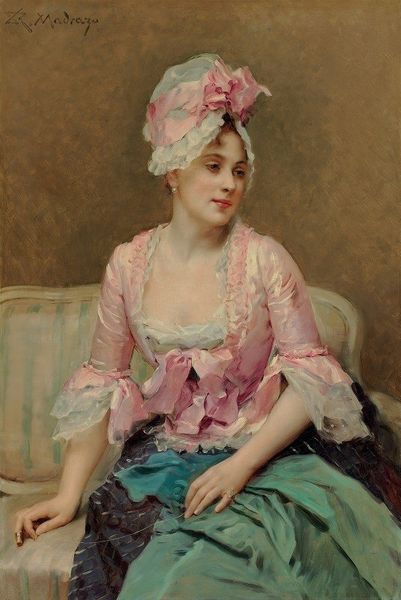
Portrait of a Lady in Pink (aka Lady in Pink Portrait of Mrs. Leslie Cotton) 1889
0:00
0:00
painting, oil-paint
#
portrait
#
painting
#
impressionism
#
oil-paint
#
oil painting
#
intimism
#
genre-painting
#
modernism
#
realism
Copyright: Public domain
Curator: This is William Merritt Chase's "Portrait of a Lady in Pink," sometimes called "Lady in Pink Portrait of Mrs. Leslie Cotton," created around 1889. Editor: A swirl of confectionary pink! It feels like a hazy memory, indistinct and dreamlike. Curator: Note the brushwork. Chase masterfully balances precise detail with a kind of evocative blurring. Consider the woman's face, sharply rendered, contrasted with the soft, almost dissolving fabric of her gown. The visible brushstrokes enhance the immediacy of the painting, drawing attention to the artifice itself. Editor: Pink is such a loaded color. Traditionally associated with youth, femininity, even naivete. I wonder what statement Chase intends. The woman is dressed elegantly, though a little overstated; this may symbolize societal expectations, the roles she must embody. Note the slightly averted gaze—a complex dynamic of display and detachment. Curator: Indeed. Chase was deeply interested in capturing modern life, and this portrait demonstrates that ambition. Observe how the composition emphasizes diagonal lines and asymmetrical balance. The woman’s seated posture, combined with the arrangement of her dress, directs the viewer’s eye across the canvas, engaging us in an active visual experience rather than passive observation. Editor: What catches my eye are the flowers. Or what might be flowers, behind the figure. Faded. Barely visible against the darker background, as if echoing a lost innocence, fleeting beauty… or the ephemeral nature of fame. Curator: An interesting interpretation. Ultimately, Chase offers us not a straightforward depiction, but an aesthetic proposition. His technical skill in depicting textures and light, creating atmospheric effects… It pushes the boundaries of portraiture, inviting contemplation of both form and content. Editor: This has offered a more complex lens to see such works. I now note the way color becomes a narrative tool in such paintings. Curator: Yes, that's correct. It encourages looking beyond surface representation.
Comments
No comments
Be the first to comment and join the conversation on the ultimate creative platform.
